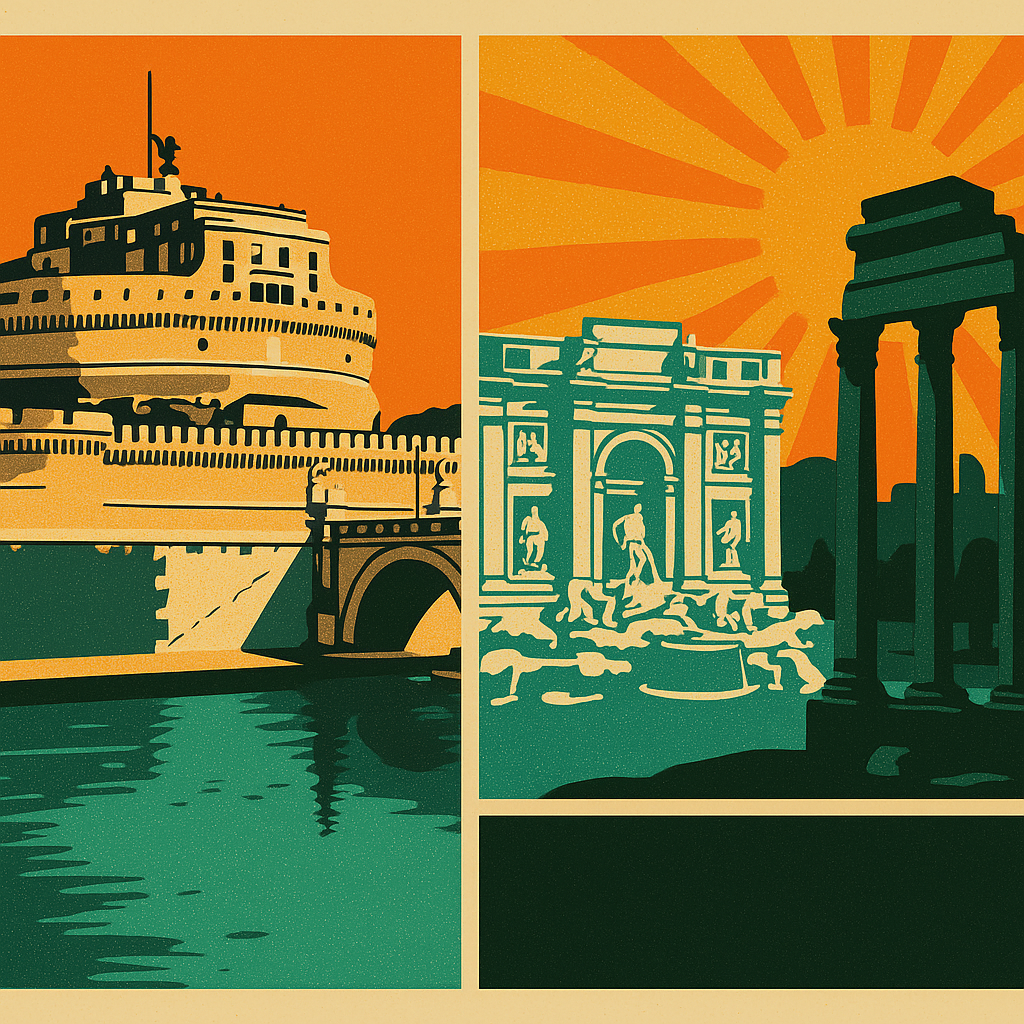Rome, in Three Textures: Stone, Water, Sky
Rome isn't just a city-it's a living canvas painted in three magnificent textures that have inspired artists for millennia. From ancient cobblestones to dancing fountains, from endless azure skies to the vibrant colors that pop against weathered walls, the Eternal City offers a feast for the senses that translates beautifully into art.
Stone: The Foundation of Forever
Walking through Rome is like stepping through layers of history carved in stone. The Colosseum's weathered travertine tells stories of gladiators and glory, while the Pantheon's perfect dome continues to defy architectural logic after nearly 2,000 years. These iconic landmarks have inspired countless artists to capture their timeless beauty-much like our Vibrant Destinations collection, where classic architecture meets bold, contemporary colors.
The texture of Roman stone changes throughout the day. Morning light reveals every crack and crevice in the ancient walls, while golden hour transforms rough surfaces into warm, glowing canvases. It's this interplay of light and texture that makes Rome a photographer's and artist's paradise.
Water: The City's Liquid Soul
Rome's relationship with water runs deeper than its famous fountains. The Trevi Fountain's cascading waters create a symphony of sound and movement, while the Tiber River reflects the city's changing moods throughout the seasons. But it's not just about the grand gestures-Rome's smaller fountains, the nasoni (little noses) scattered throughout the city, provide both refreshment and charm.
After a day of fountain-hopping and exploring, nothing beats settling into a Roman café for the perfect aperitivo hour. Speaking of Italian liquid traditions, our Ciao Bella Beverages collection captures that authentic Italian spirit—from rich espressos that fuel morning adventures to refreshing spritzes that celebrate the day's discoveries.
Sky: Rome's Ever-Changing Canvas
Roman skies are pure theater. Dawn paints the city in soft pastels, while sunset sets the ancient stones ablaze in gold and crimson. The interplay between Rome's earthbound architecture and its celestial backdrop creates moments of pure magic-especially when viewed from the Spanish Steps or the terrace at Castel Sant'Angelo.
These dramatic skies have inspired artists to experiment with bold color combinations and striking contrasts. The way Roman light transforms throughout the day reminds us why art should be fearless with color and texture.
Bringing Rome Home
Rome's three textures-stone, water, and sky-remind us that the most beautiful art comes from observing the world around us with fresh eyes. Whether you're planning your own Roman adventure or simply want to bring a piece of that eternal beauty into your space, remember that the best travel experiences, like the best art, engage all your senses.
Ready to explore more artistic interpretations of iconic destinations? Browse our complete collection for pieces that capture the spirit of travel and the beauty of the world's most inspiring places.
Buon viaggio! 🇮🇹
